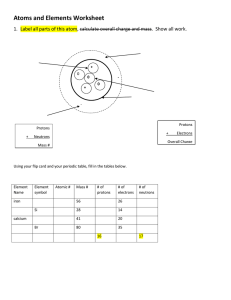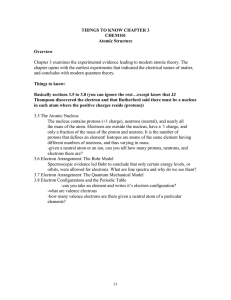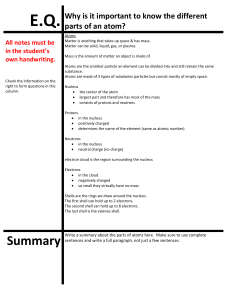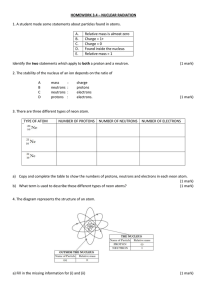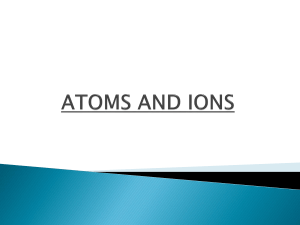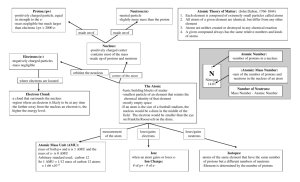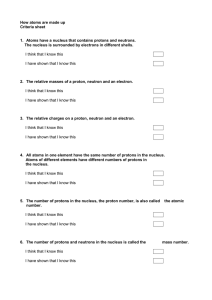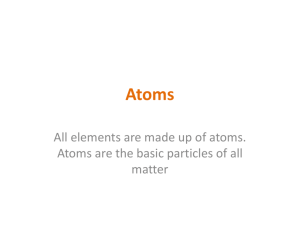AtomicStructureFlowChart
advertisement
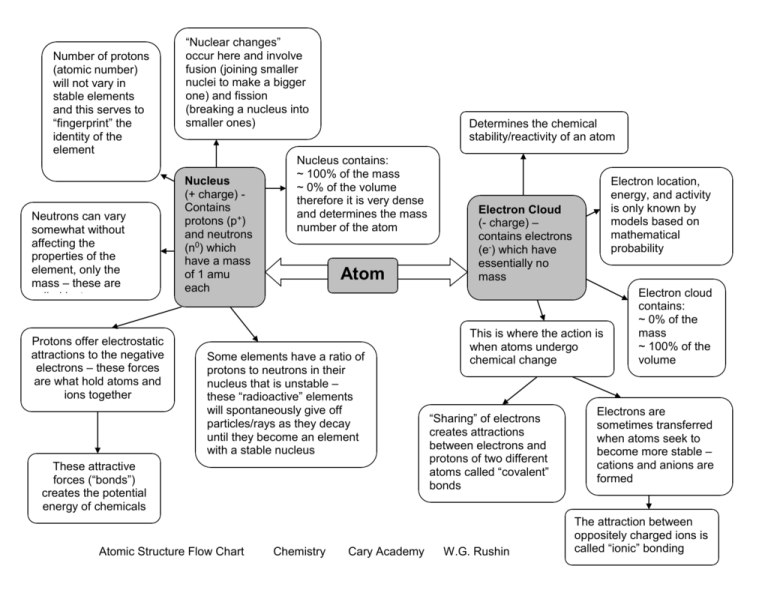
Number of protons (atomic number) will not vary in stable elements and this serves to “fingerprint” the identity of the element Neutrons can vary somewhat without affecting the properties of the element, only the mass – these are called isotopes Protons offer electrostatic attractions to the negative electrons – these forces are what hold atoms and ions together “Nuclear changes” occur here and involve fusion (joining smaller nuclei to make a bigger one) and fission (breaking a nucleus into smaller ones) Nucleus (+ charge) Contains protons (p+) and neutrons (n0) which have a mass of 1 amu each Determines the chemical stability/reactivity of an atom Nucleus contains: ~ 100% of the mass ~ 0% of the volume therefore it is very dense and determines the mass number of the atom Atom Some elements have a ratio of protons to neutrons in their nucleus that is unstable – these “radioactive” elements will spontaneously give off particles/rays as they decay until they become an element with a stable nucleus These attractive forces (“bonds”) creates the potential energy of chemicals Atomic Structure Flow Chart Chemistry Cary Academy Electron location, energy, and activity is only known by models based on mathematical probability Electron Cloud (- charge) – contains electrons (e-) which have essentially no mass This is where the action is when atoms undergo chemical change “Sharing” of electrons creates attractions between electrons and protons of two different atoms called “covalent” bonds W.G. Rushin Electron cloud contains: ~ 0% of the mass ~ 100% of the volume Electrons are sometimes transferred when atoms seek to become more stable – cations and anions are formed The attraction between oppositely charged ions is called “ionic” bonding

